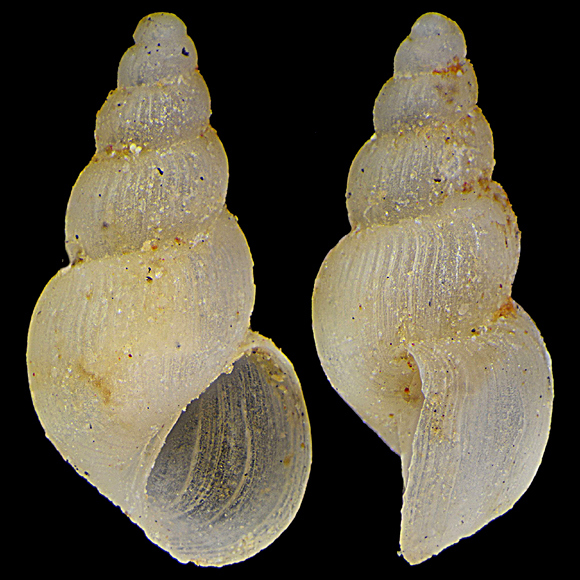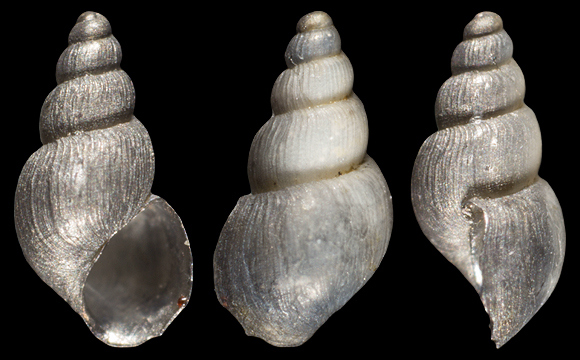
The shell of this species « is ovate, conical, almost matte and white. The larval whorls are two in number; the summit is partially hidden inside a folding formed by the first normal whorl; three more follow this one, convex, adorned with thin little costae, or rather strong longitudinal striae separated from each other by large interspaces. The last whorl is by far the taller and wider, expanding up to the two thirds of the whole shell. The suture that separates the whorl is rather deep, due to the convexity of the latter. The aperture, quite elongate, is oval, with a sharp right edge, the left one reflected on the columella and expanding outside at the base, point where the aperture slightly constrict; sometimes the reflected margin detaches itself, making the peristome continuous. » – de Folin & Périer: Les fonds de la mer vol. 2, Paris 1875, p. 112.
Above and below: 160m deep, Islas Chafarinas, N. Morocco. 2,74mm. Original pictures provided by A. Nappo (IT).
– (CC BY-NC-SA) –


Specimen MNHN-IM-2000-5648 from the collection De Folin at the Muséum National d’Histoire Naturelle of Paris, France. Fosse de Cap Breton. 2mm. Original picture provided by M. Caballer – (CC BY). The variations, especially in the Atlantic, affect the strength of the sculpture as well as the slenderness of the shape. In this specimen from the northern part of the range, the ribblets run along the whole height of the whorl, while they tend, in mediterranean specimens such as the one from the Chafarinas islets, to vanish after the periphery.